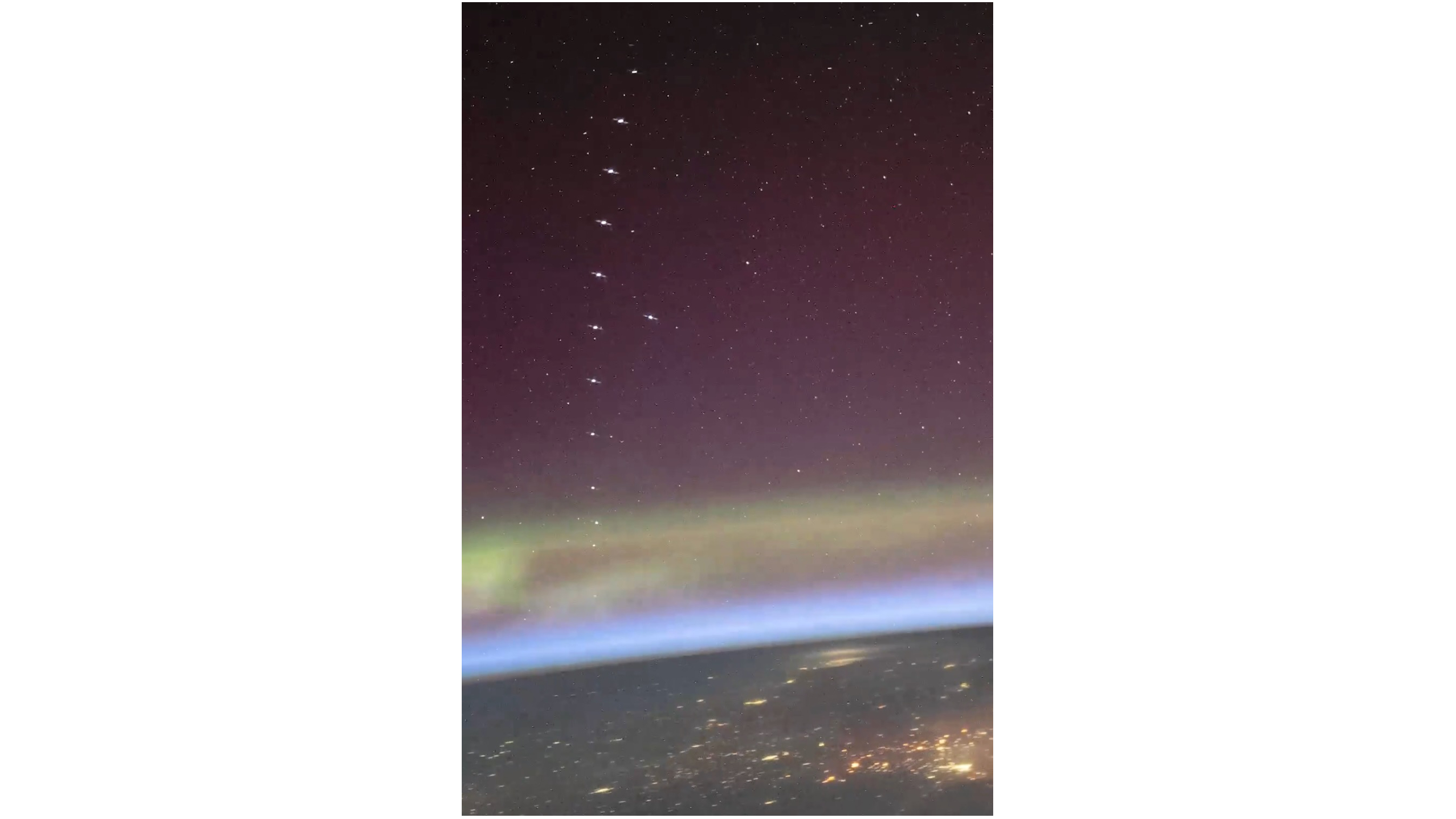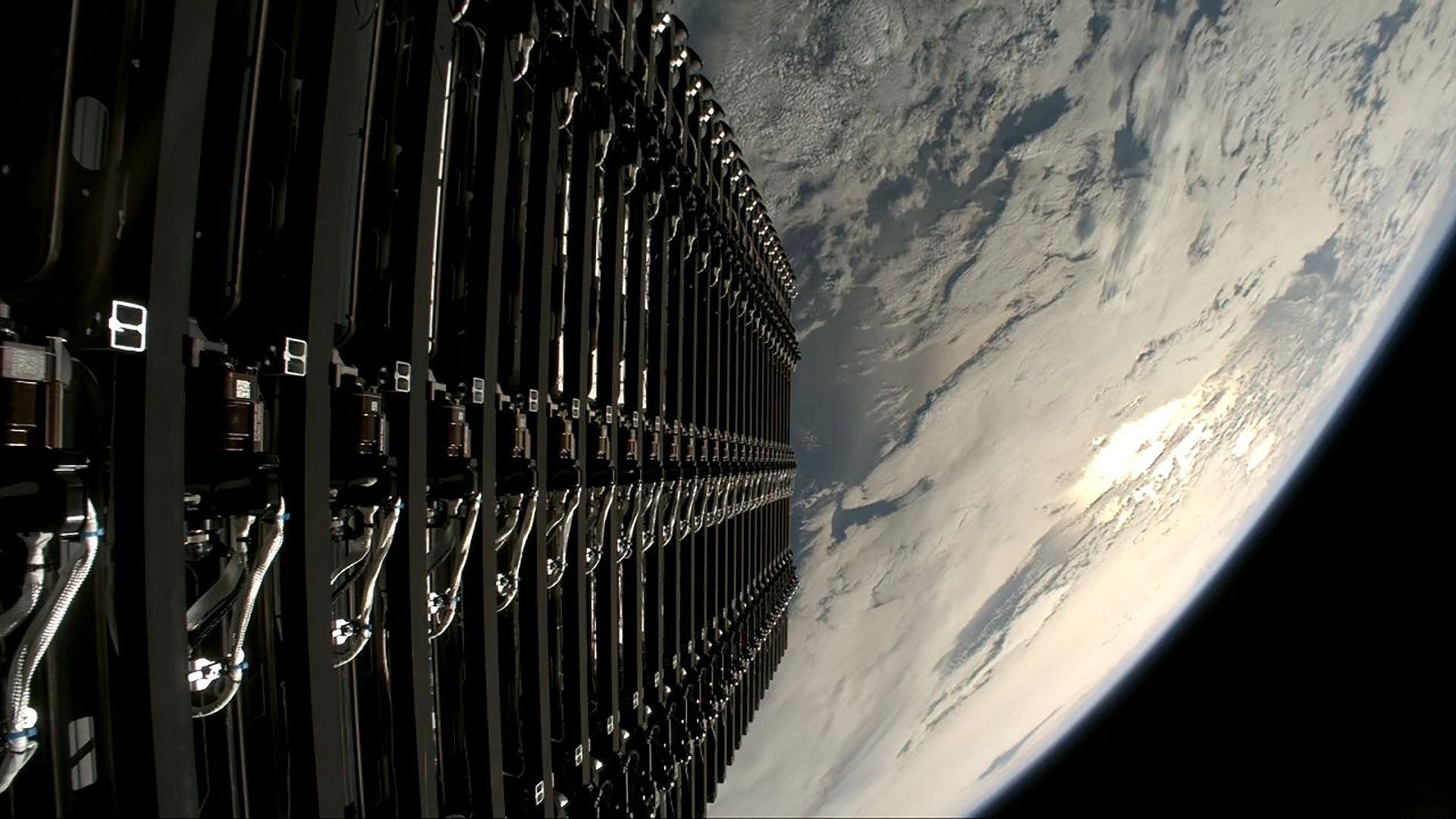ISS astronaut captures amazing video of SpaceX Starlink satellite train cruising above auroras
The SpaceX satellites shone as brightly as Jupiter.

An amazing new video shows flashes of sunlight sparkling off a batch of SpaceX satellites, with a green aurora glowing just below.
NASA astronaut Don Pettit, an accomplished amateur photographer, captured the stunning "train" of SpaceX Starlink broadband satellites during his recent mission to the International Space Station (ISS). The aurora was produced by solar particles slamming into Earth’s atmosphere.
Despite the natural light show, the Starlink group was "very visible. Many were as bright as Jupiter — they would flash from one to 10 seconds," added Pettit in a comment on X, where he posted the undated video on Tuesday (Oct. 7).

That is indeed quite bright. The peak brightness of Jupiter is roughly -2 magnitude in the night sky. For comparison, the brightest stars range between about magnitude 2 and -2, Venus can get as bright as -4, and the sun is at magnitude -26. (Lower numbers indicate brighter objects on astronomers' magnitude scale.)
Pettit’s latest space mission, a 220-day jaunt, concluded on his 70th birthday on April 20, when the Russian Soyuz spacecraft that carried him and his two crewmates touched down in the steppe of Kazakhstan. Since life gets busy on the ISS, however, Pettit has been steadily uploading a backlog of images and videos ever since coming home.
Starlink current consists of nearly 8,600 operational satellites, according to a tracker maintained by space debris expert Jonathan McDowell. While that’s a boon for remote areas looking for the reliable internet service SpaceX strives to provide, astronomers have concerns.
The brightness Pettit observed is one of the worries, as these Starlink trains — usually most apparent shortly after launch aboard SpaceX’s Falcon 9 rocket — can interfere with astronomical observations. Starlinks also have brought up space debris concerns, both in that more satellites raise the risk of collisions and because their reentry could leave traces of metals in Earth’s atmosphere, potentially causing pollution and affecting climate.
Breaking space news, the latest updates on rocket launches, skywatching events and more!
In response to these concerns, SpaceX has changed the reflectivity of some of its satellites, and the company continues to emphasize that the Starlinks can be maneuvered in case of trouble. And many more Starlinks will reach orbit over time: SpaceX eventually hopes to have as many as 42,000 of the satellites aloft.

Elizabeth Howell (she/her), Ph.D., was a staff writer in the spaceflight channel between 2022 and 2024 specializing in Canadian space news. She was contributing writer for Space.com for 10 years from 2012 to 2024. Elizabeth's reporting includes multiple exclusives with the White House, leading world coverage about a lost-and-found space tomato on the International Space Station, witnessing five human spaceflight launches on two continents, flying parabolic, working inside a spacesuit, and participating in a simulated Mars mission. Her latest book, "Why Am I Taller?" (ECW Press, 2022) is co-written with astronaut Dave Williams.
You must confirm your public display name before commenting
Please logout and then login again, you will then be prompted to enter your display name.
